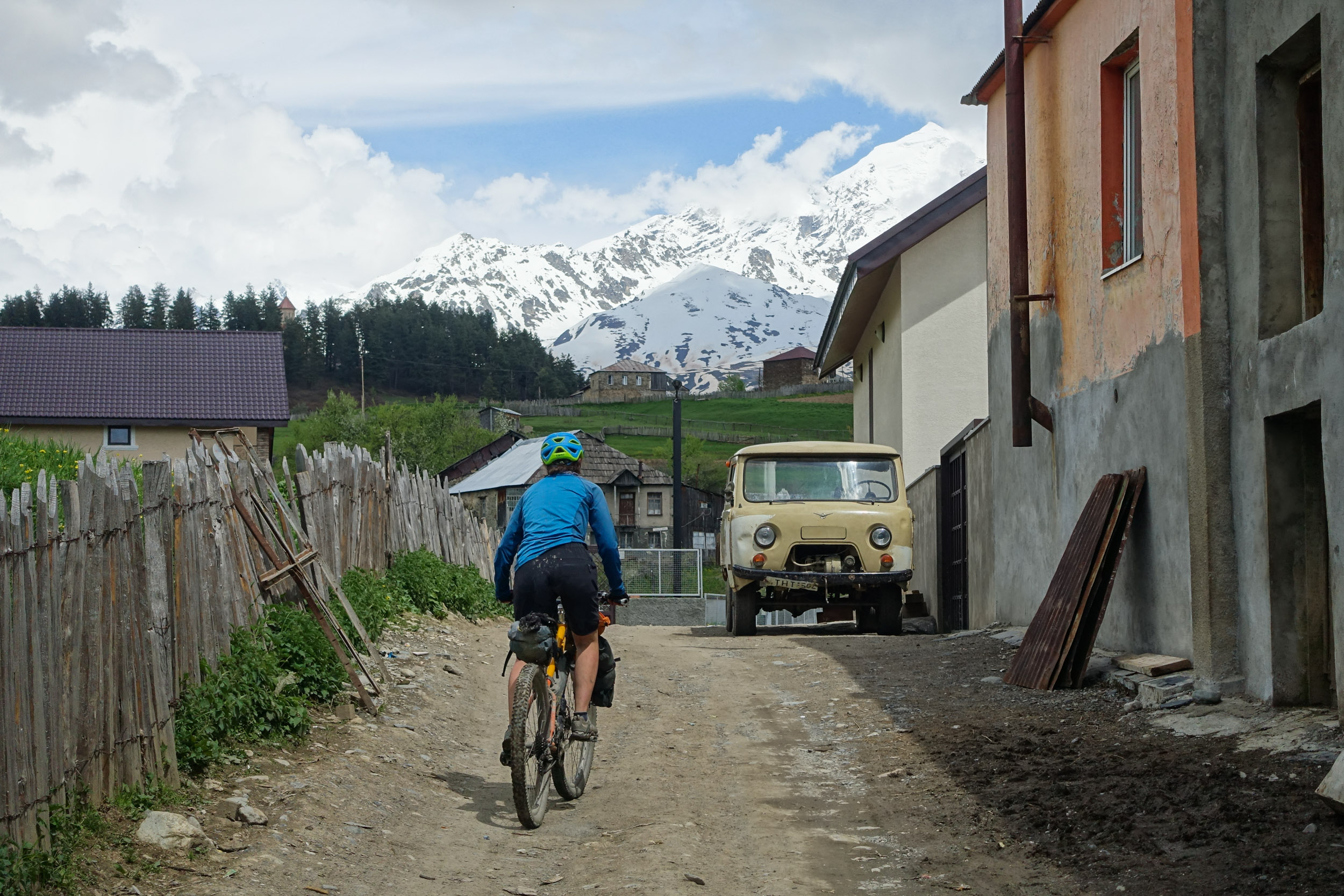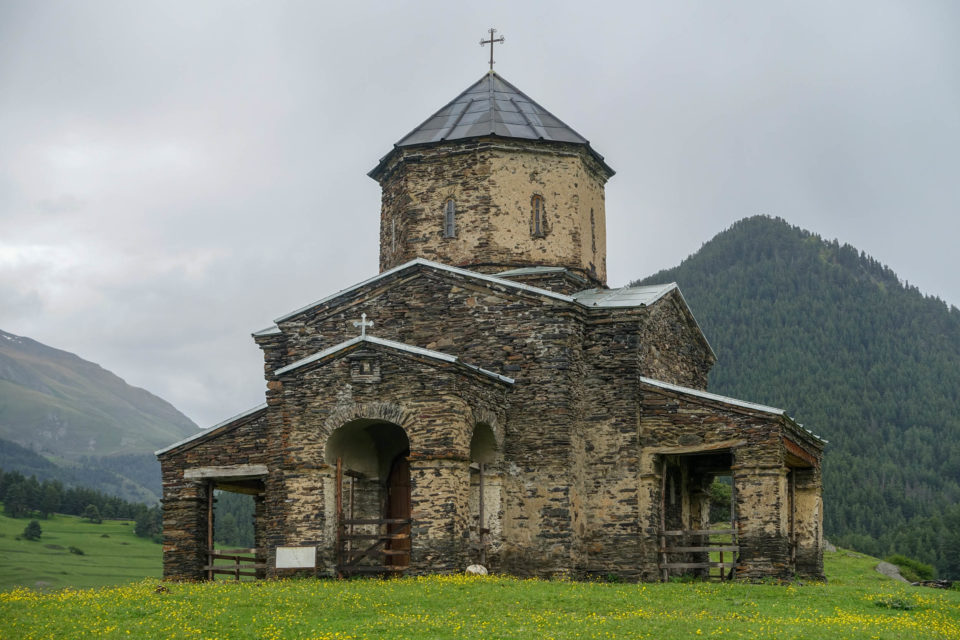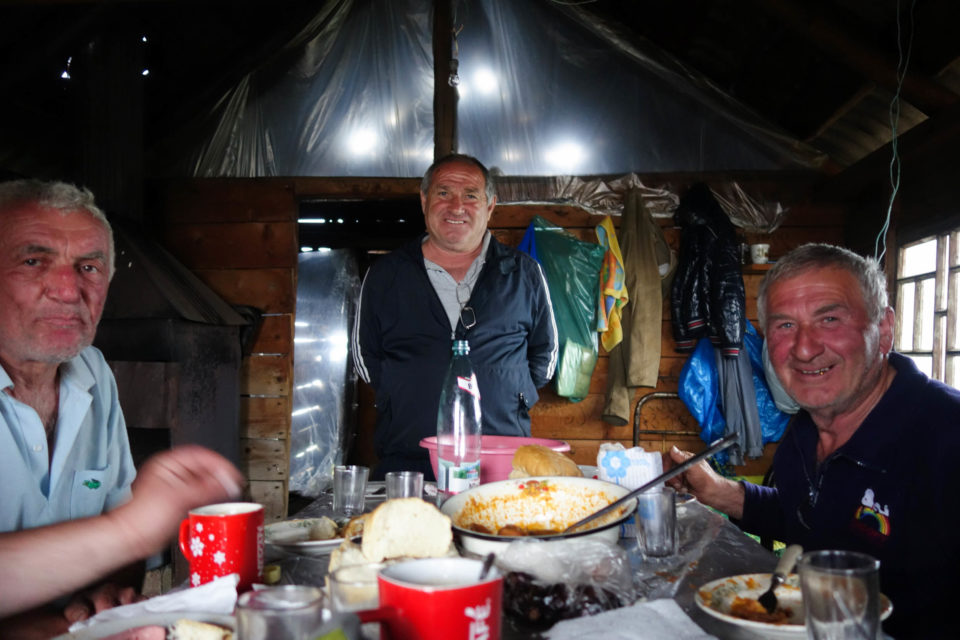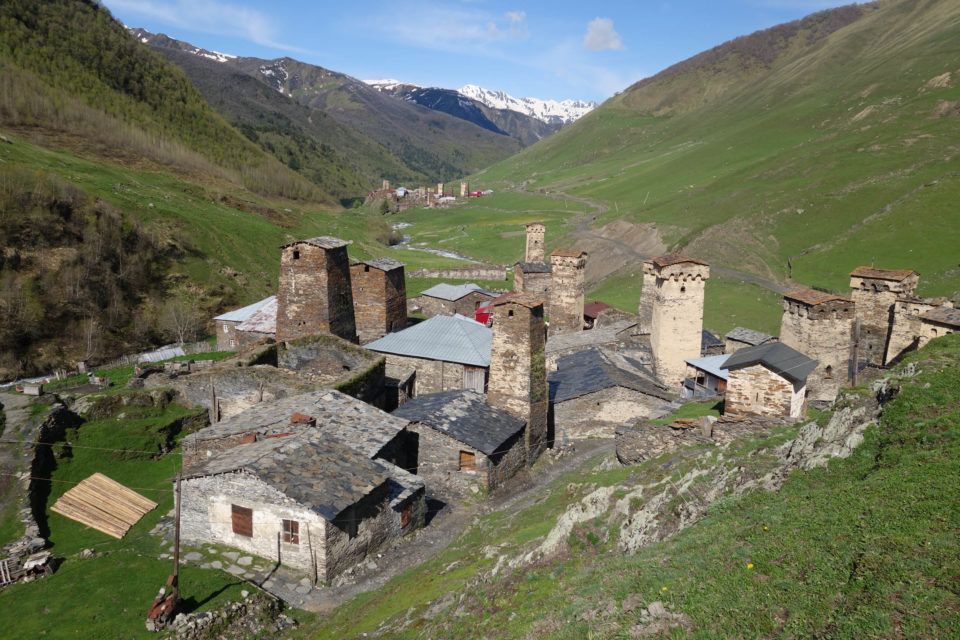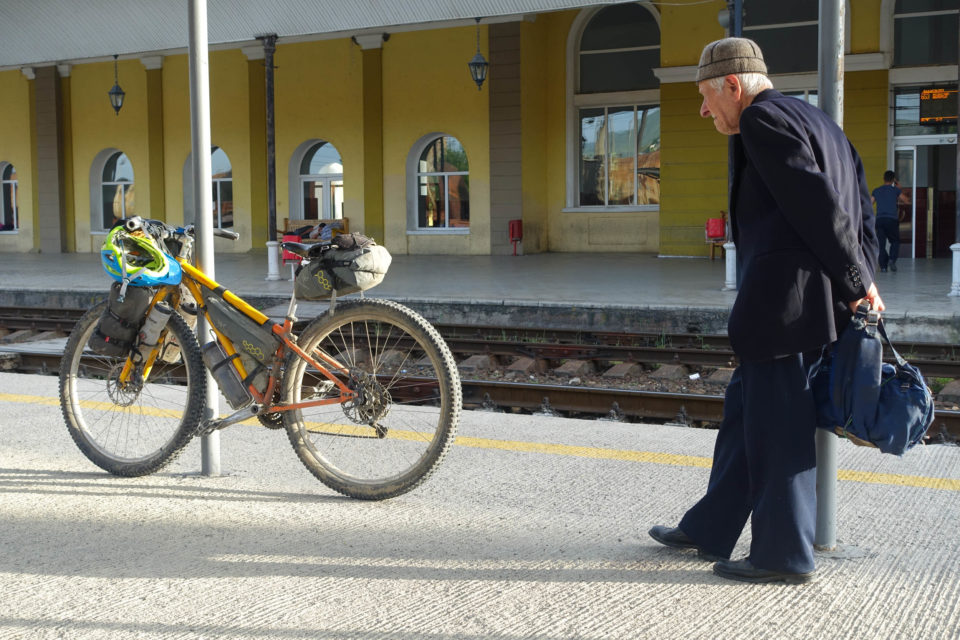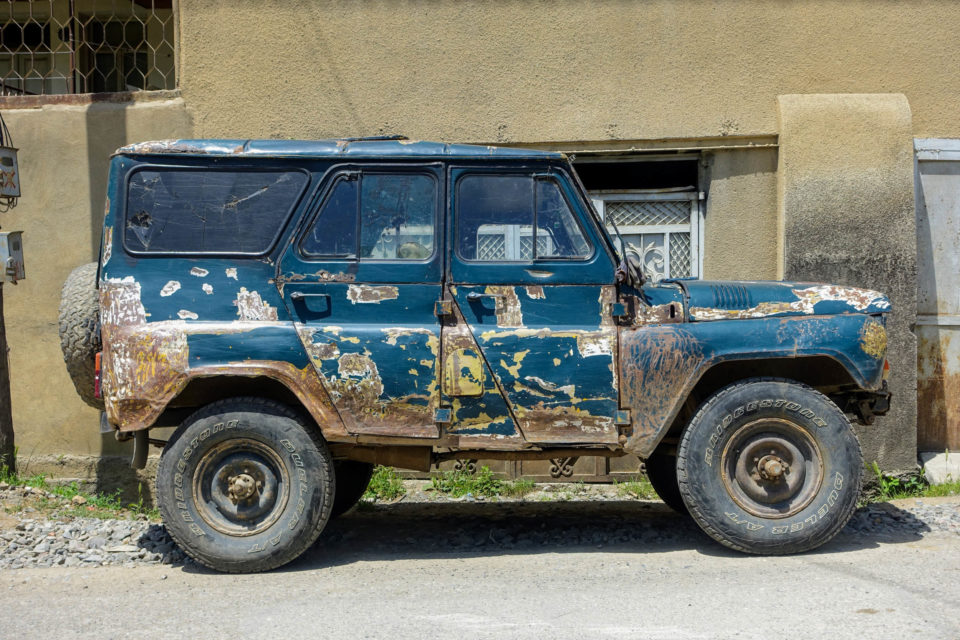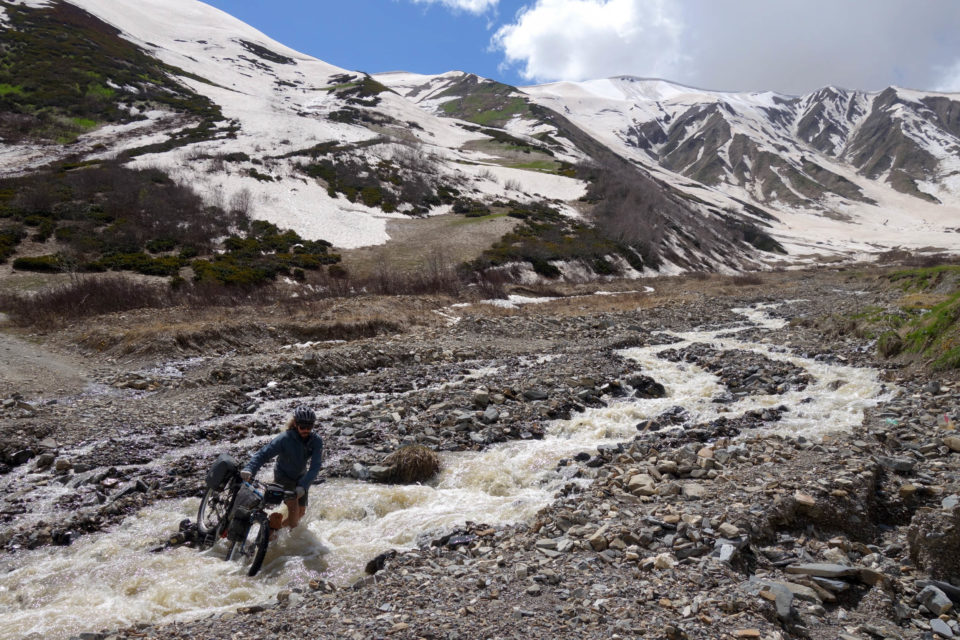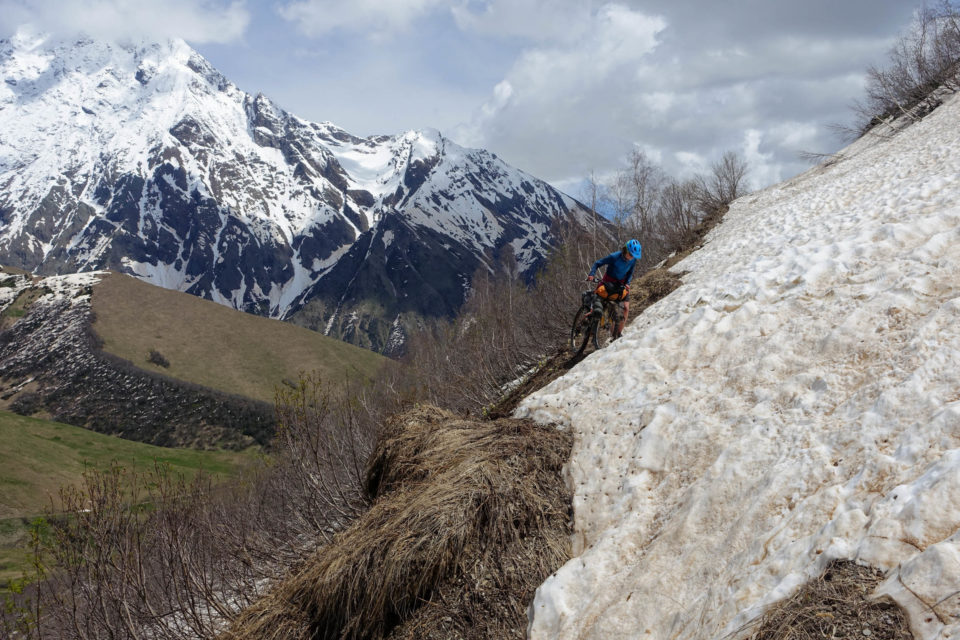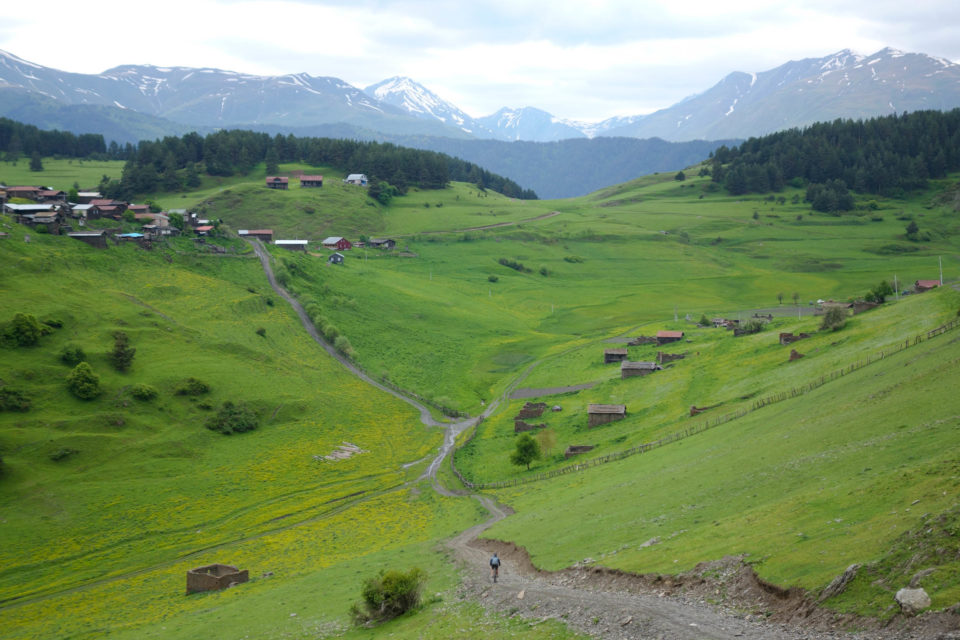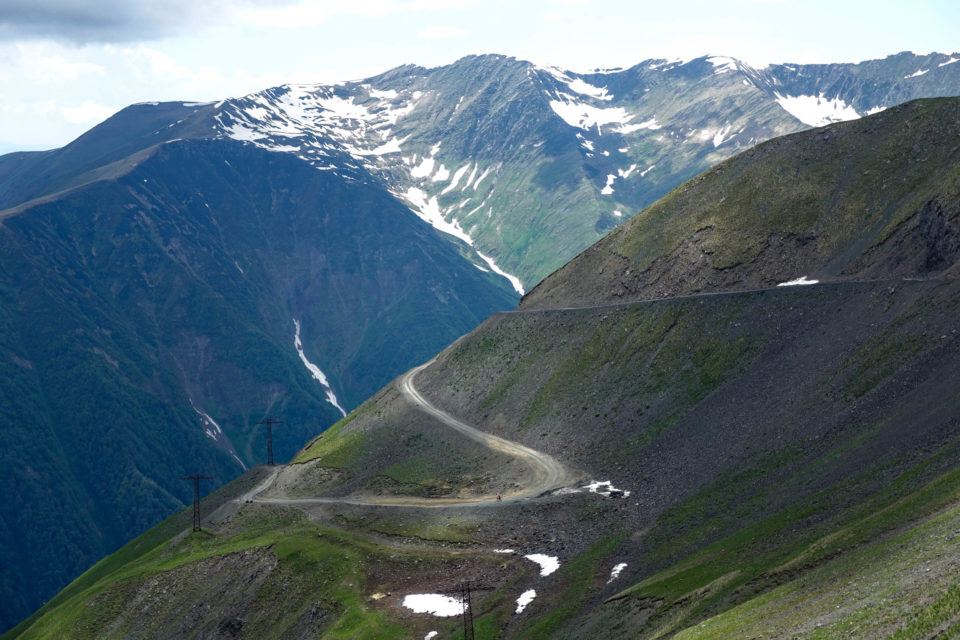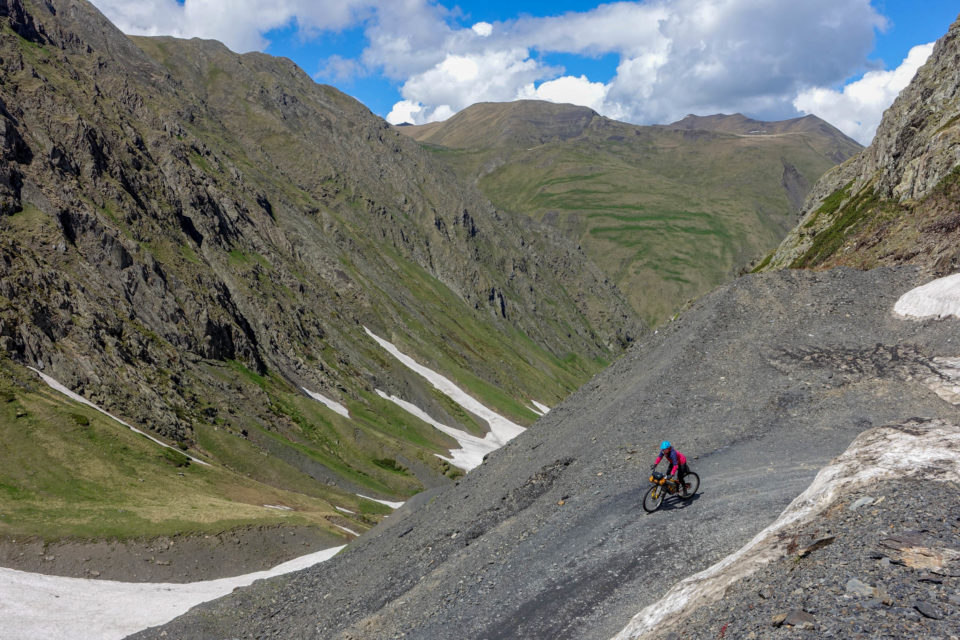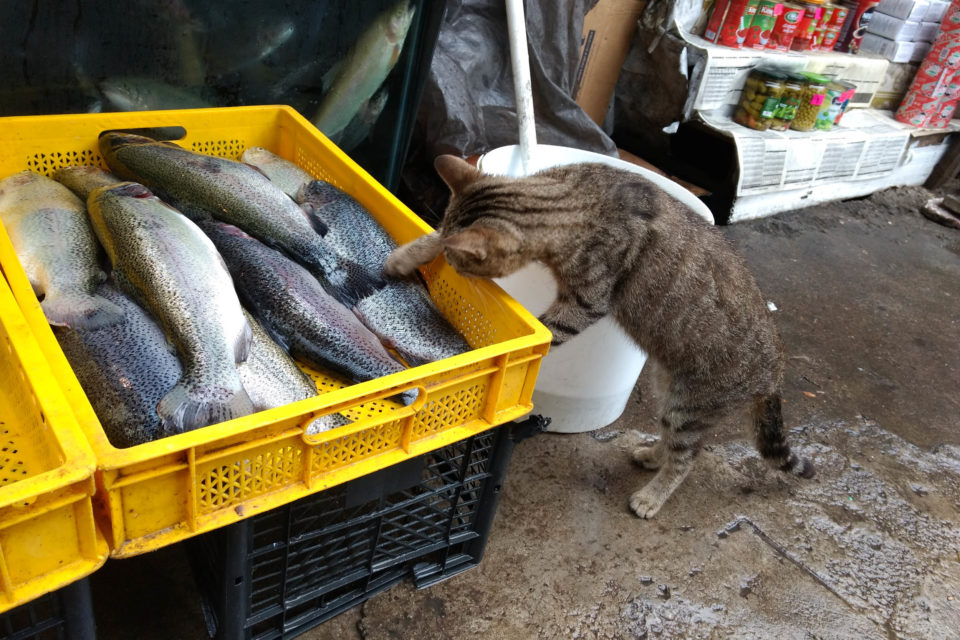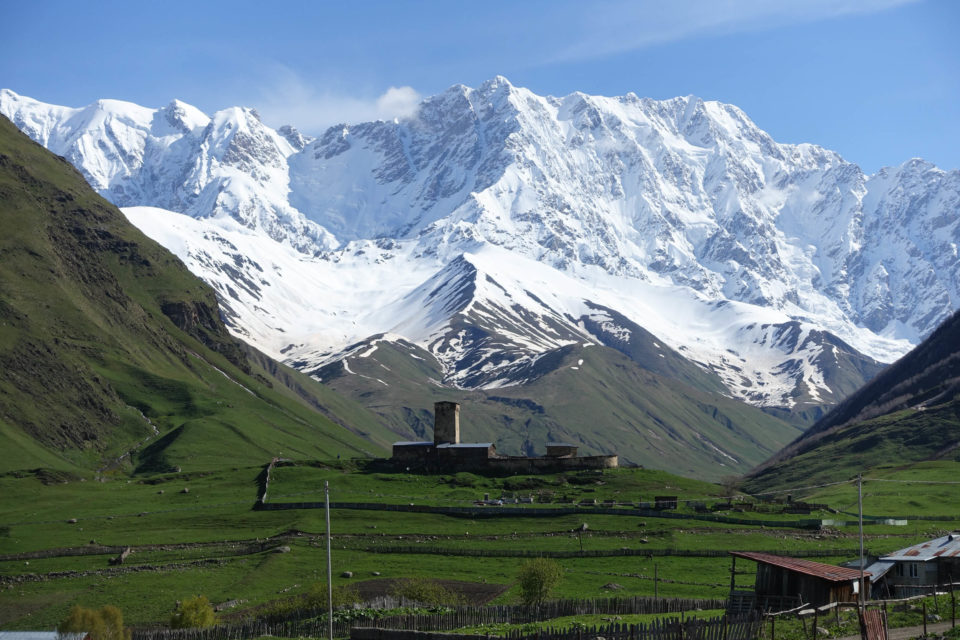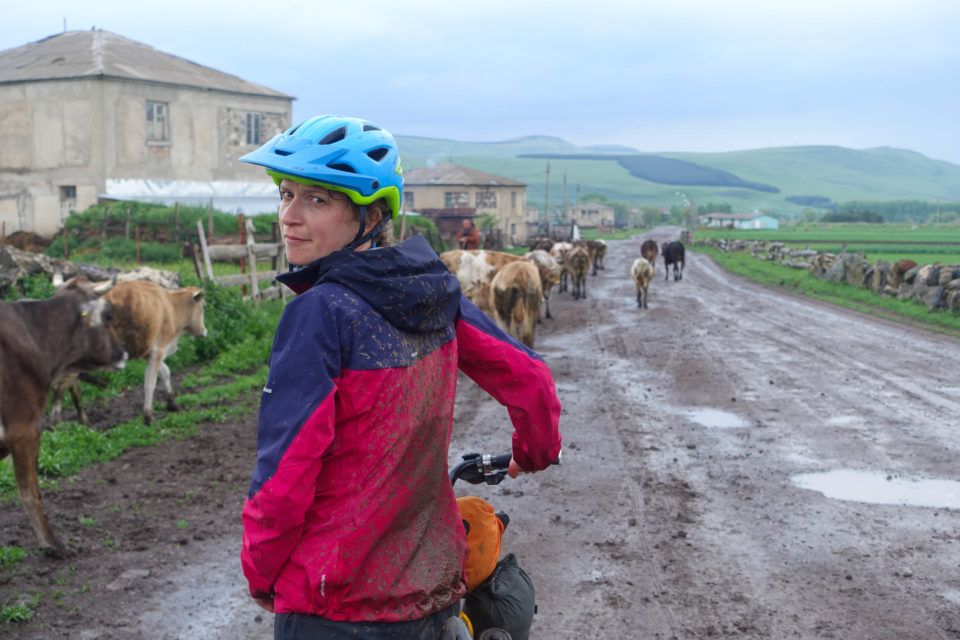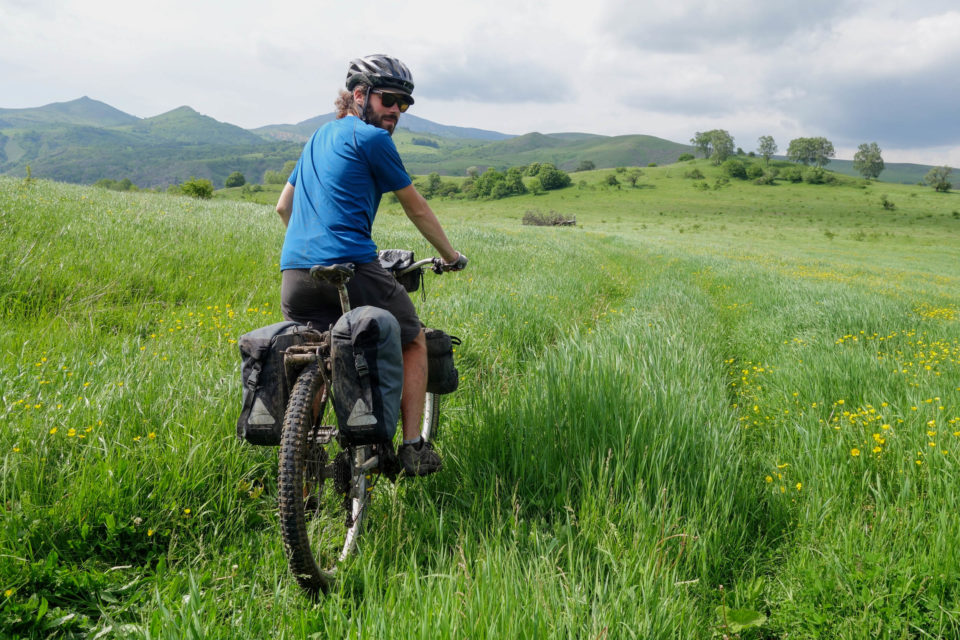Route Report: Georgia’s Caucasus Crossing
Share This
Lee Vilinsky and Cherry Fitzsimmons traveled to the Republic of Georgia to ride our Caucasus Crossing route last summer, and they put together this thorough post-ride route report. Read on for their thoughts on the highlights, challenges, logistics, and amazing Georgian food…
Words and photos by Lee Vilinsky (@leevilinsky) and Cherry Fitzsimmons (@theseplacesinbetween)
Georgia is a country that not many Westerners hear or think about. It’s relatively small, it was restrained in the shackles of the Soviet Union for a long time, and it has a complicated geographical identity, being located in neither Europe nor Asia. Have a ride through the country, though, and you’ll realize that it’s literally a bikepacker’s dream. The riding is rugged, the food is incredible, and the people will forcibly push so much kindness on guests that there’s actually a phrase to describe bikepackers who intend to ride but themselves in a blurry afternoons’ drinking: “victims of hospitality.”
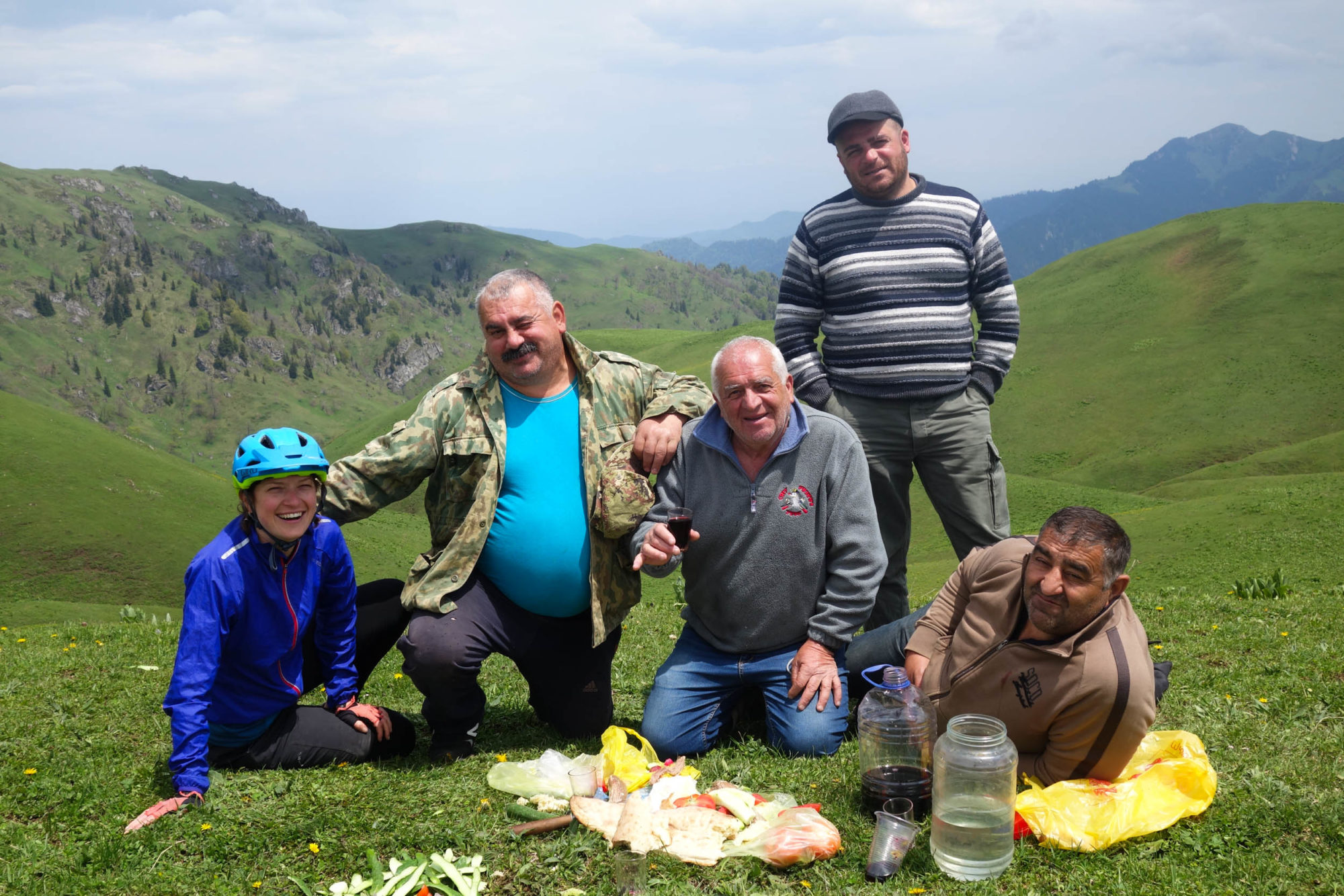
To give some background, we decided to take a short career break this past summer and had a few months to spend riding our bikes anywhere in the world. Having already toured extensively in North and South America, we started looking east. We knew we wanted to spend as much time in the mountains as possible, but Georgia wasn’t even a thought at this point. Big names like “Himalayas” and “Pamirs” came to mind, but it wasn’t until Cass published his route and ride report of the Caucasus Crossing that we became intrigued (spoiler alert: we rode through the Himalayas and Pamirs, too). The photos and description sounded amazing, but still, we hardly knew anything about this relatively small nation. Was the Khachapuri (cheese-baked bread) really that good? Were the sheepdogs really that ferocious? Has it just been bikepacking’s best kept secret for all this time? All of these questions simply fuelled our intrigue. We’d later learn that the answer was “yes” to all of the above.
We rode across the country for an entire month and we can say it is one of the most memorable places we’ve pedalled. This was partly down to Cass’ well-executed route, but a major component was the aforementioned food, kindness, and chacha (oh, the chacha).
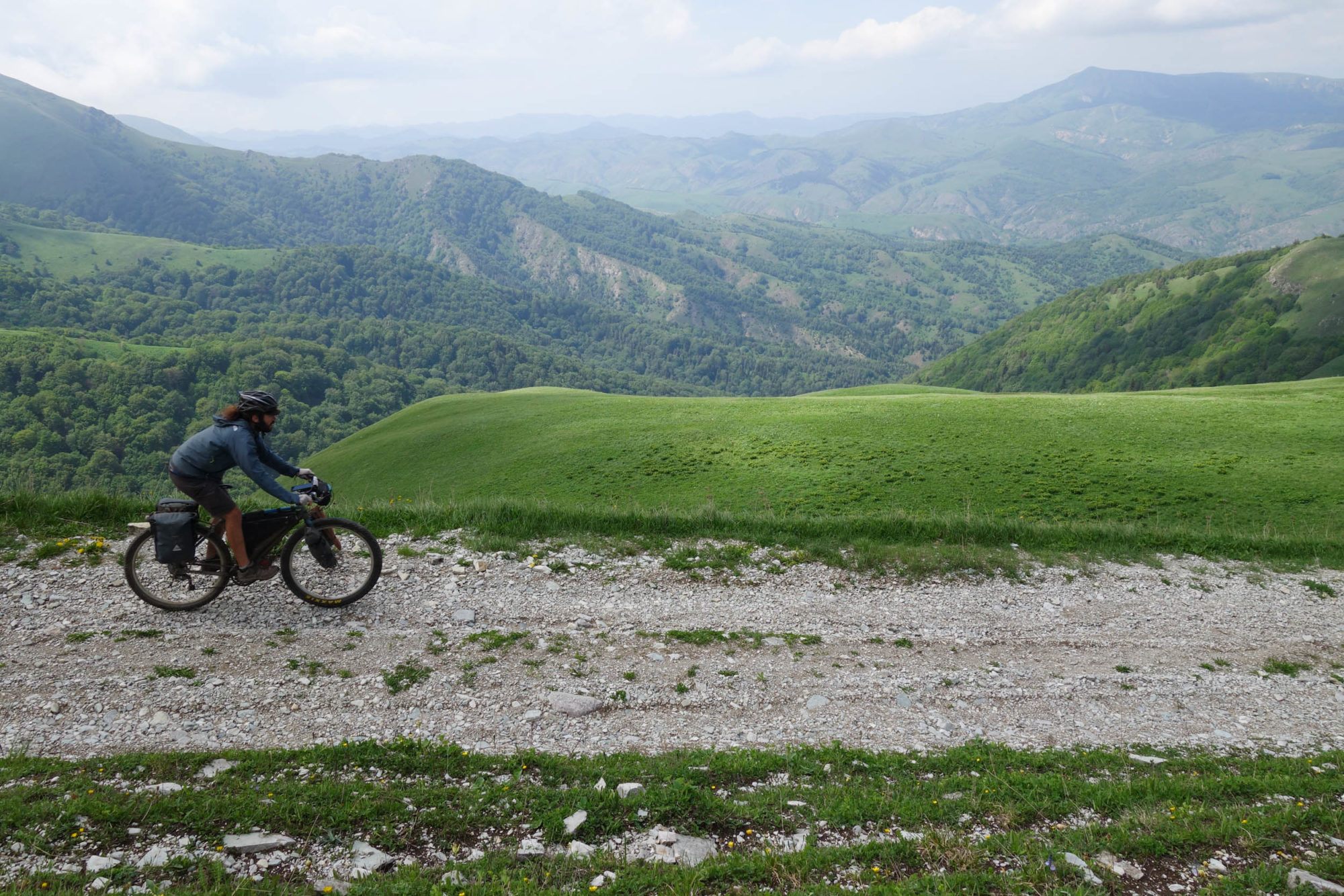
Georgia is also a particularly good destination for someone’s first bikepacking trip as the logistics couldn’t be simpler. Getting from one side of the country to another is easy via cheap trains that allow bikes, arguably the most civilized method of overlanding at high speeds. In addition, food and lodging are both cheap and plentiful. Although we camped quite a few nights, there is the possibility of riding nearly the entire route without camping gear, though a modification on the section between Paravani Lake and Gori, as well as other sections including as Atsunta Pass would be necessary to do this. Either way, a cafe with hot food or a guesthouse with a warm shower is rarely far away should you encounter as much foul weather as we did. Try to avoid cycling in Georgia in May or October if you don’t like rain. Although, for us, cycling in May also meant we avoided the blistering midday heat and tourists that come in the height of summer.
Route and Planning
We were quite early in the season to begin this route, starting from Zugdidi in mid-May (note that the route notes recommend a mid-June start). As such, we encountered numerous snowy passes over the course of the route, and we would definitely recommend riding it in June at the earliest. Atsunta Pass was still closed by the time we made it to Tusheti in early June, so we avoided the infamous hike-a-bike but we were able to push through all of the other passes. Having to negotiate slippery ice and snow on off-camber landslides isn’t exactly something we’d recommend, however. The mid-summer heat in the lowlands can be tough as well, so starting from Zugdidi in early-mid June may be the most ideal time.
In terms of getting to the start in Zugdidi, we ended up taking the train from Tbilisi. You can buy tickets on Georgia Rail’s website, but we found it easiest to just go to the train station to buy tickets. The five-hour journey from Tbilisi to Zugdidi was only about $8 USD per person. We took a morning train and got there by the afternoon. The bikes were hardly an issue as well; the attendant let us keep them in a space at the end of our car and charged $5 per bike for the journey (they advised at the train station that you must pay the attendant directly for the bikes). We only had to take off the front wheels to get them in a position that worked.
Though our intention was to ride the Caucasus Crossing in full, we ended up cutting out a few sections. Some due to logistics, some due to difficulty, and some out of pure laziness. We chose to cut out the section from Gori to Tbilisi, for example. The previous couple of days riding and pushing into Gori kicked our butts, though it was still one of our favorite sections. After finding out that regular trains from Gori to Tbilisi cost the equivalent of $1 USD per person and bikes can be brought on without a problem, we didn’t need much convincing.
Another major section we cut out was Atsunta Pass. Abano Pass, at the southern end of Tusheti, was nearly 800m lower and still had plenty of snow in June, so we didn’t even consider Atsunta to be an option. Even if it was open, we felt intimidated by stories of loose shingle on steep scree. Instead, we rode straight up into Tusheti from Tbilisi, via Tbilisi National Park and the towns of Tianeti and Akhmeta, which had a nice section of gravel connecting them (there’s an update to the Ride with GPS track to show this).
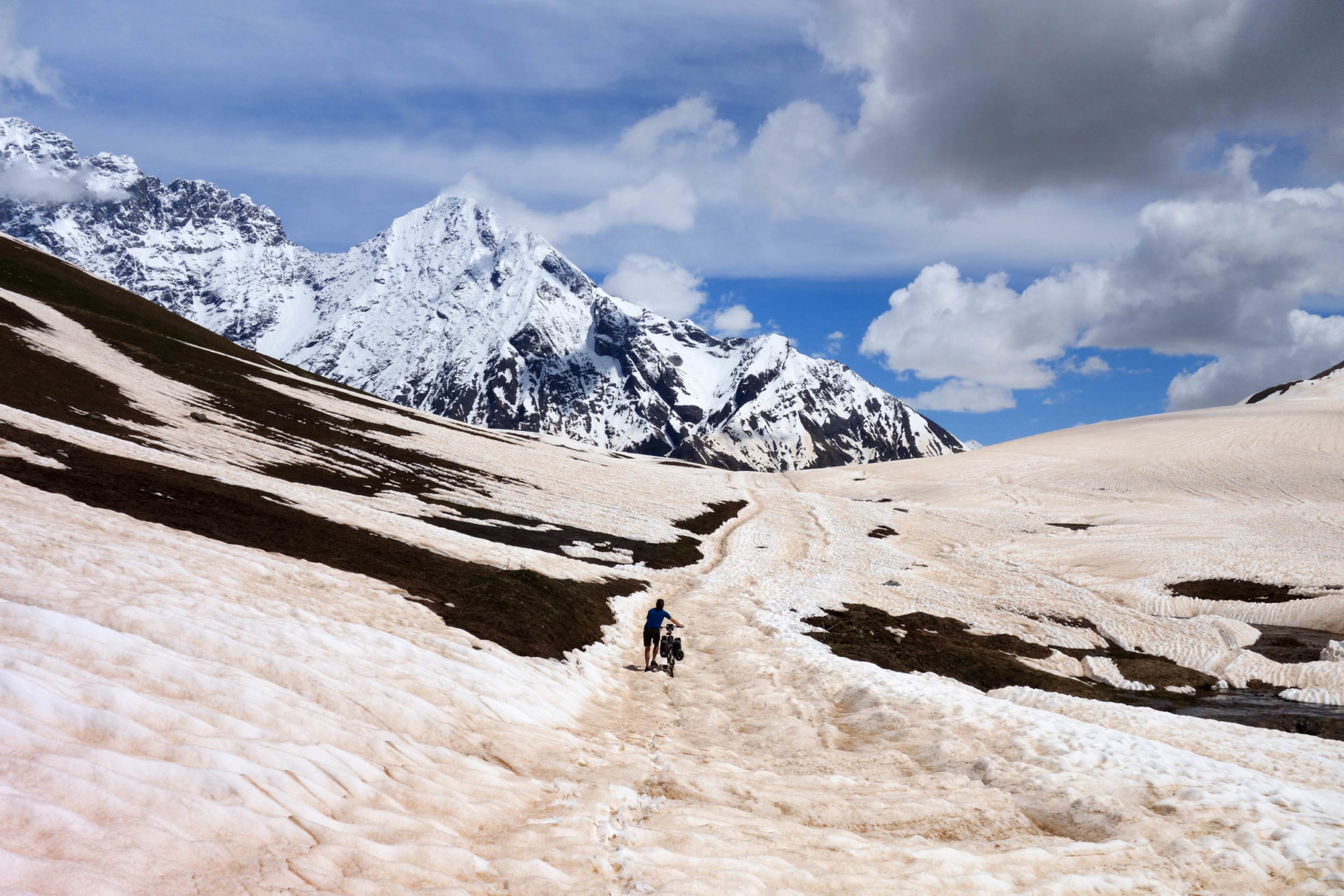
Some Thoughts on the Difficulty of the Route
As others have noted, the hike-a-bike through Atsunta Pass is the single driving factor for the quoted 8/10 difficulty. Though other sections of the ride are technically difficult, we feel that the overall difficulty was reduced by not riding Atsunta Pass. That said, we also felt that the route as a whole varied wildly on different aspects of difficulty. For example, logistics, planning and transport are very simple in Georgia, but some of the terrain can be brutal.
Technical Difficulty
Though we were grateful to be riding 29ers, especially in the rough stuff, we could see experienced riders having a great time on a cross or gravel bike with at least 40mm tires. Most of the route is comprised of dirt roads of varying quality.
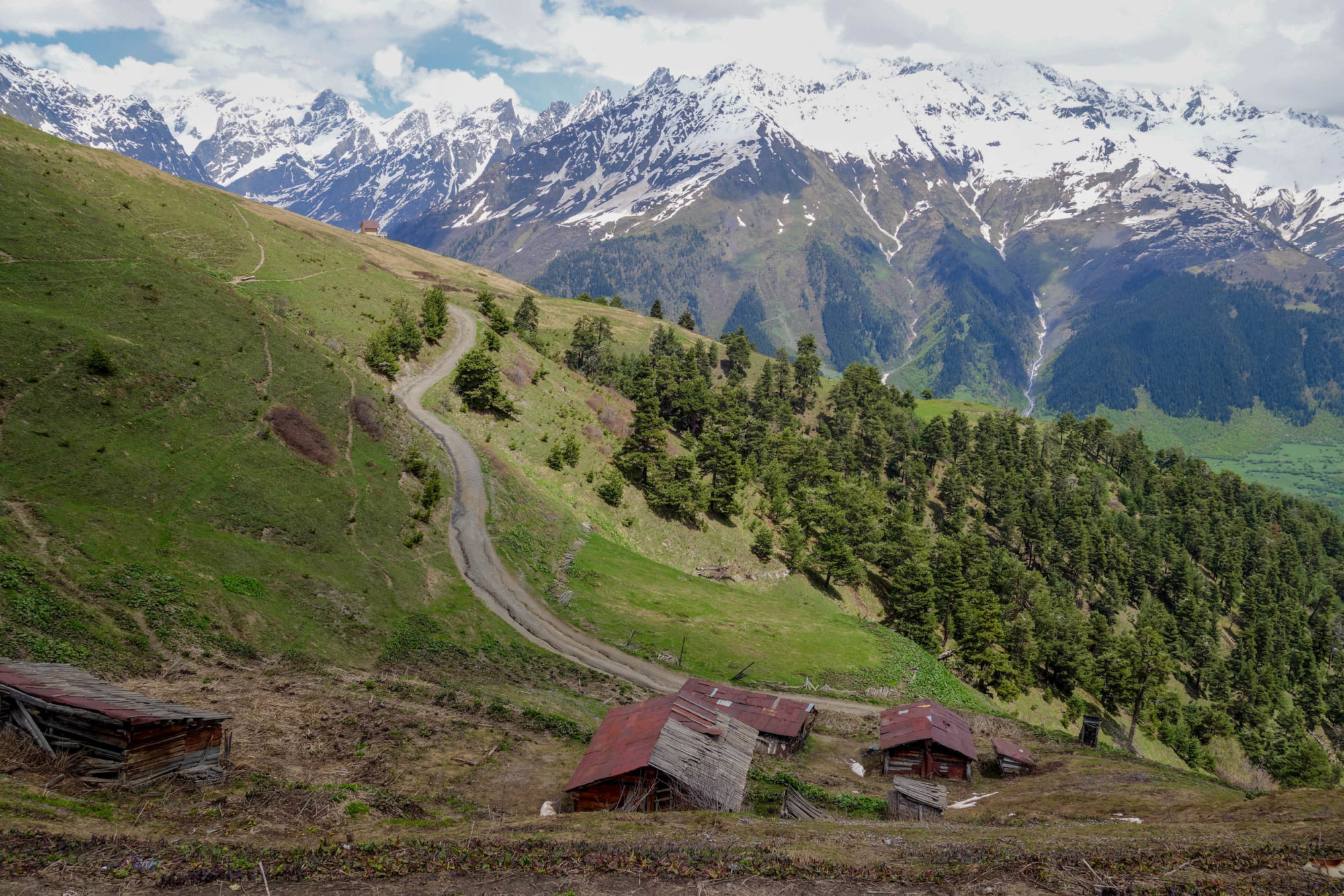
Physical Demand
Don’t get us wrong, even without riding Atsunta Pass, there are still plenty of hike-a-bikes, steep grades, and river crossings. The more difficult sections that come to mind are between Lake Paravani and Gori, as well as Abano Pass. Don’t underestimate the effect bad weather/snow/landslides will have on the difficulty!
Logistics and Resupply
You’re hardly ever more than a day’s riding from a resupply, or even a guesthouse should you need one. Clean water springs are also abundant, so carrying lots of food/water is not required. The ease of transport logistics also brings down this rating significantly. This said, we’re well-travelled bikepackers, so dealing with a new country and an unfamiliar language may prove challenging to some.

Route Highlights
Tusheti was definity one of our favourite areas. The fact that this area is so isolated from the rest of the Caucasus makes it very unique, both in history and culture. Locals who live there typically migrate to the lowlands for the winter these days, though you can certainly find some who still remain there through the coldest months, during which the only lifeline they have to the outside world is a fortnightly helicopter that brings in supplies. Tusheti is undoubtedly difficult to get to (you’ll see when you ride Abano Pass), but the rewards are high.
In terms of getting off the beaten track, you can’t do much better than riding the old military road between Lake Paravani and Gori. This was more adventurous than we were expecting, and involved a lot of pushing up 30% grades and horse tracks, but there were moments where we felt total isolation. The valley after the pass from Tsalka has a lawless feel to it as it was so inaccessible. We met a number of friendly (often drunken) Azeri shepherds who were astounded that we were coming through on bicycles.
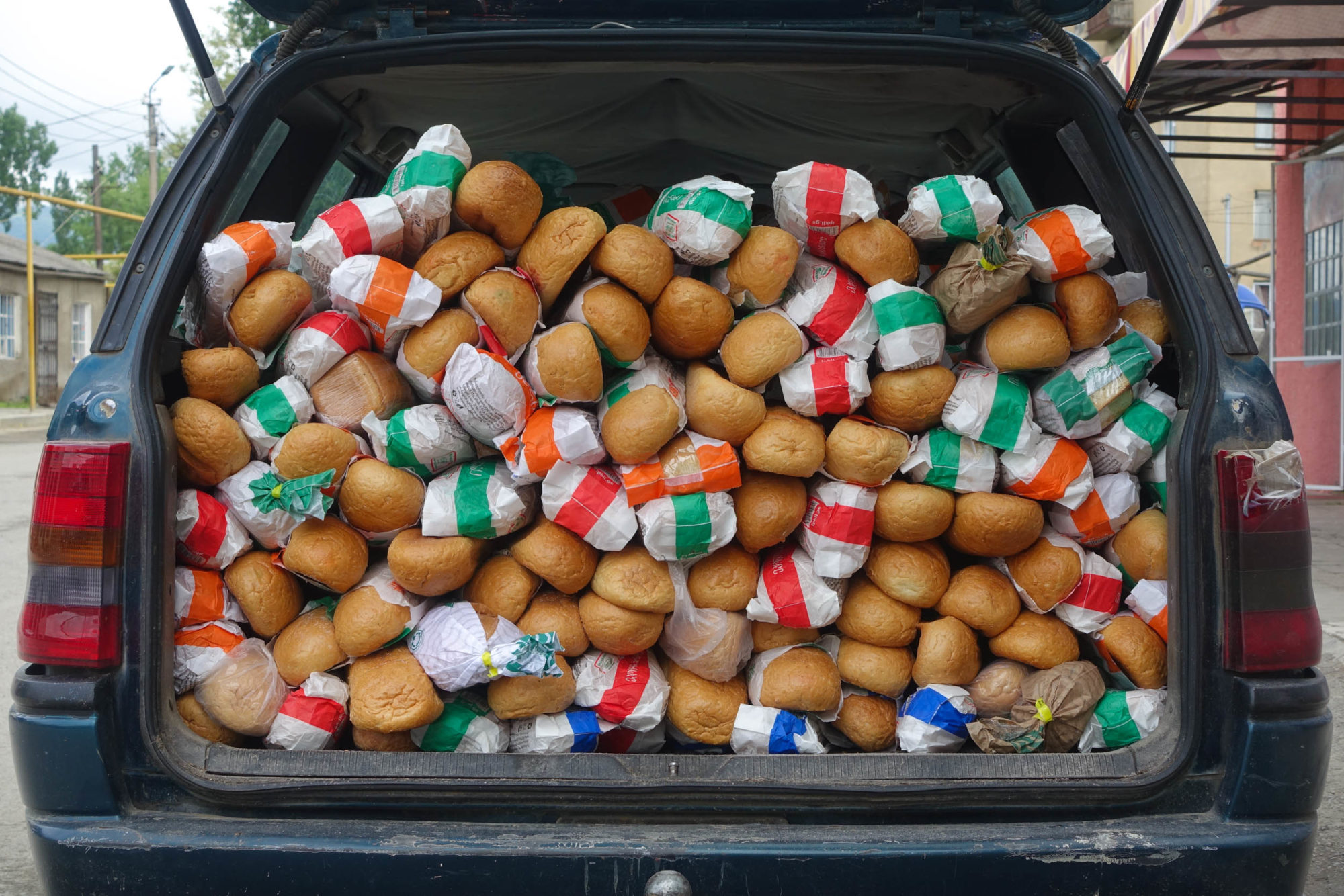
Food
Ask anyone in a post-Soviet nation where the best food is and they will almost always point to Georgia. Though heavy on dairy and bread, there is so much to Georgian foods that we never got tired of eating. The staples of khinkali (handmade dumplings with a soup inside) and khachapuri are available almost everywhere. Another omnipresent dish is the “Georgian Salad,” fresh cucumber and tomato, sometimes with a bit of dressing. Even the most basic of meals is served with a plate of fresh herbs such as tarragon, parsley, and a purple basil unique to the Caucasus. Dive a little deeper, however and you’ll find rich salads made with walnut paste, garlic, and pomegranates. Eggplant is also a hot commodity in many dishes, as well as the popular shashlik kebab.
As vegetarians, which typically creates its own challenges while travelling by bike, we actually found Georgian food to be some of the most vegetarian friendly in all of our travels on two wheels. Keep in mind, though, that there is a lot of dairy in much of Georgian cuisine (though many of the dishes below are vegan).
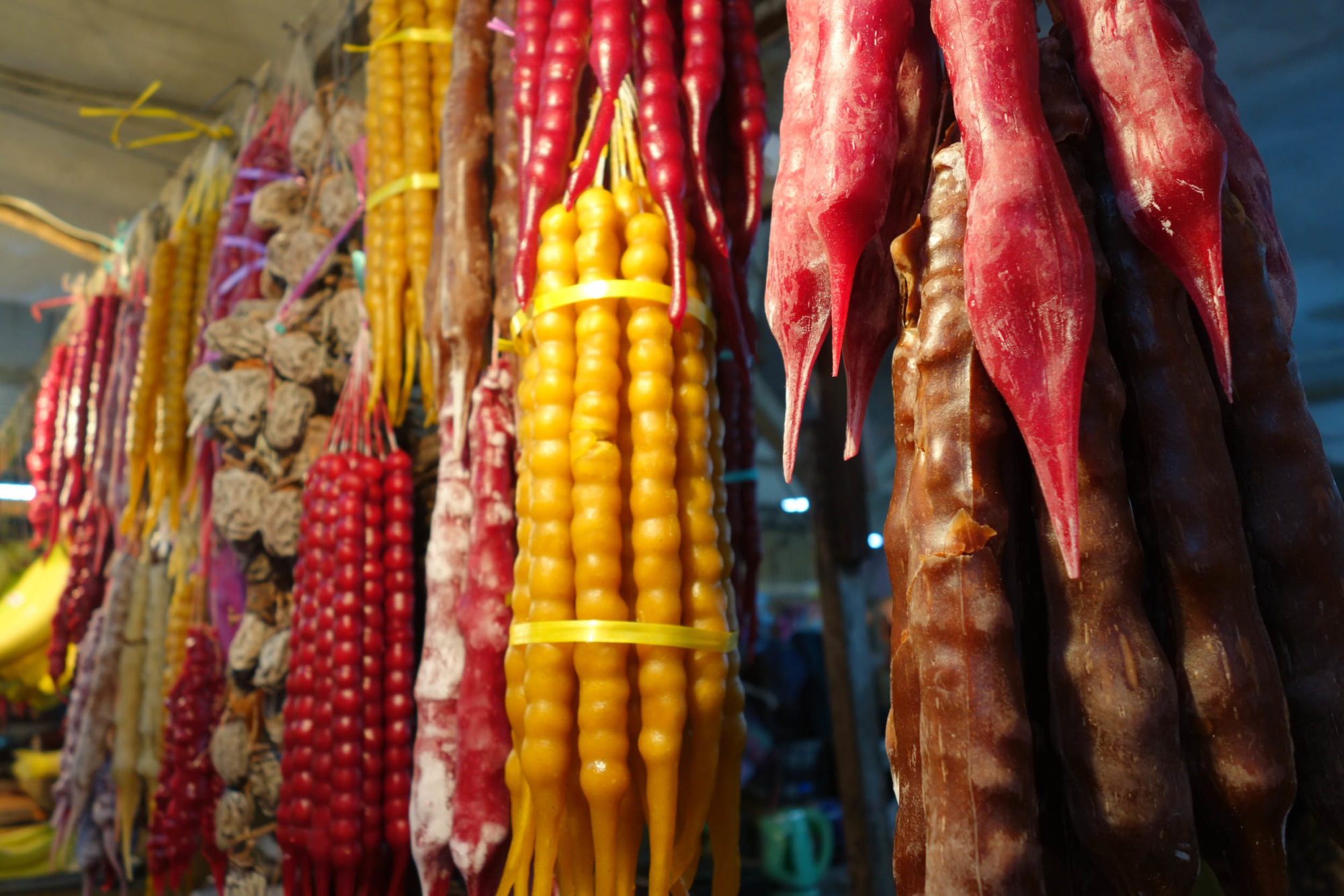
Some of our Favourite Vegetarian Dishes:
Ajapsandali: Ratatouille-style assortment of vegetables and herbs.
Badrijani nigvzit: Eggplant rolls filled with garlic and walnut paste with pomegranate seeds on top.
Lobiani: Beans baked into a bread, khachapuri Imereti style. Also comes served as a rich bean stew in a clay pot.
Khachapuri: You’ll see plenty of photos in tourist areas showing Acharuli khachapuri, which is essentially a bread boat baked with cheese, a runny egg, and a big slab of butter (basically, a cyclist’s dream snack). Unfortunately, this version is significantly less common in the countryside. Much more common (and still very good) is the Imereti variety, which is a round bread with a thick layer of cheese baked inside it.
Tkemali: Condiment made with sour green plums, garlic, and mint.
Matsoni: Similar to sour yogurt, made with bacteria from the Caspian Sea.
Sulguni: Cheese, often smoked, made by most families in Svaneti.
Churchkhela: Often referred to by tourists as “Georgian Snickers”. It looks like a candle stick, but is actually walnuts on a string with a thick, waxy coating made from flour and grape juice.
Some popular non-vegetarian dishes:
Chikhirtma: Chicken soup.
Ostree: Spicy, salty, beef stew cooked in a tomato sauce.
Kinkhali: Up there with khachapuri in popularity, these meat-filled dumplings are ubiquitous in Georgia. It wouldn’t be out of the ordinary to see a group of Georgians order a tray of 50 of these without any sides, washed down with a few carafes of wine. Veggie versions (mushroom, potato, or cheese-filled) are common alternatives in bigger cities. And most places will do some kind of kebab or barbecue style meat.
As a side note, wine is abundant and drunk very frequently. Many Georgians will invite you into their homes to drink, and almost everyone has their own homebrew that they consume with almost every meal. There is actually a lengthy process for toasting, usually involving one for guests, one for people who are no longer with us, one for peace, and one for Sakaartvelos (that’s what Georgia is called in Georgian). Also note that you’re expected to down the whole glass of wine after each toast. Some key words in our Georgian vocabulary were words for toasts, which always made everyone happy, and ultimately resulted in drinking more! And this is before they even get out the chacha, a homebrew style of Vodka made from grapes, so take this as a warning before you become victims of hospitality!
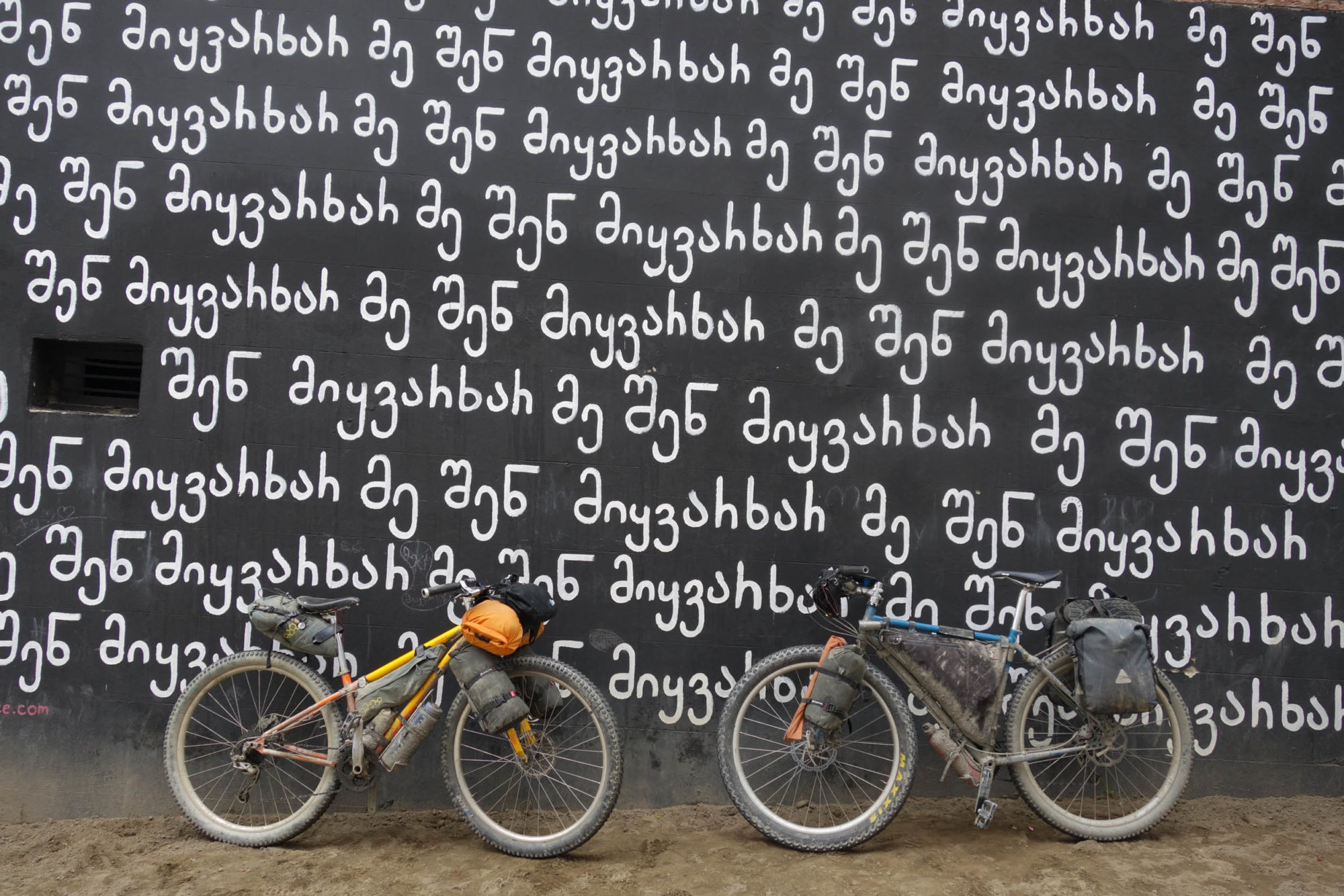
Bikes + Gear
I won’t go too deep into the nuances of our bikes and gear. To put it simply, I find it difficult to get hung up on bikes and the rest when most things we would ever want to ride can be done with a rigid 29er (or 27.5+ if you’re feeling fancy). And that’s exactly what we had this time: a Velo Orange Piolet and a Kona Unit, set up with 2.3” tyres. The 3×9 drivetrains could arguably use a bit of an update, but they’ve been working fine for ages and nothing needed replacing before our trip. For reference, three of our four tires were Terrene Chunks (highly recommended) set up tubeless (also highly recommended). In terms of hauling our gear, Cherry went full bikepacker while I had a hybrid setup of fork bags and panniers. Note that this was primarily because the Caucasus Crossing was just a small part of our whole trip,one that extended into Central Asia, where we need to carry more supplies. Otherwise, a bikepacking setup for both of us would have been just fine.
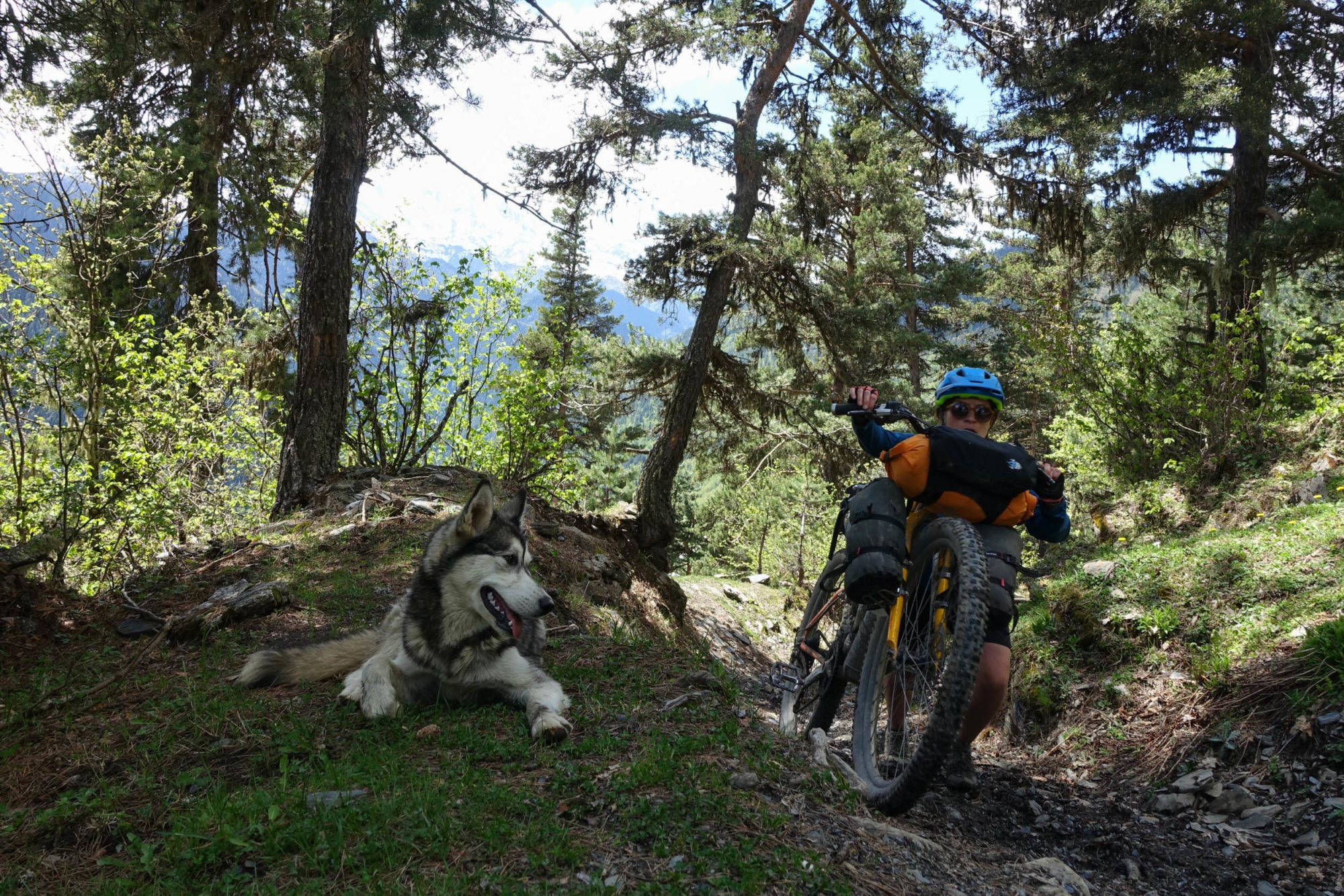
Sheepdogs
Yes, they have their own section.
We had a few undesirable encounters with sheepdogs. As Cass mentions in the route description, the entire region of Svaneti seems to be devoid of sheep (and thus sheepdogs). Things ramped up when we hit the plains near Paravani Lake, which seemed to be a haven for Azeri shepherds and their dogs with spiked collars and huge, sharp teeth. Tushetian sheepdogs are in a different class all their own. They’re bred and trained to fend off and attack wolves, so they’re very big, and by far the most ferocious protectors we’ve ever encountered. Many shepherds in Tushteti are aware that the area receives a fair bit of tourism, which generally keeps them closer to their flocks if they need to call off their dog(s).
Our experience was that once a sheepdog is fixated on you, the only way to get them to go away is to either A) call for their owner and hope they’re not too drunk to come and save you, or B) giving them a massive berth, sometimes to the point where you need to precariously slide down a mountain just to prove to them that you’re not after their sheep.
There’s no way to predict when you’ll encounter one, but in general:
If you see sheep, there’s likely a sheepdog. Stay put or call out for the owner. If you find yourself too close for comfort with one, dismount your bike and put the bike. between you and the dog as you slowly back away, going wide to avoid proximity to the flock. This typically helps calm the dogs. I wouldn’t even consider dog/pepper spray, as getting close enough to use it is way beyond what would be comfortable, and may ultimately make the dogs more angry.
Wrap-Up
Will we be coming back? This is a question that’s always difficult to answer, as we love to explore new places when given the chance. Out of all of our travels, however, Georgia is one place where we can say that we will definitely be back. Georgia offers the whole package for those travelling by bike: incredible roads, amazing food, and likely the warmest people you’ll meet. It’s only becoming more accessible and popular with Western tourists, so bikepacking’s “best kept secret” might not be so secret for long. Still, it has become one our favorite destinations and is a place we constantly recommend to our cyclist friends, especially first-time bikepackers.
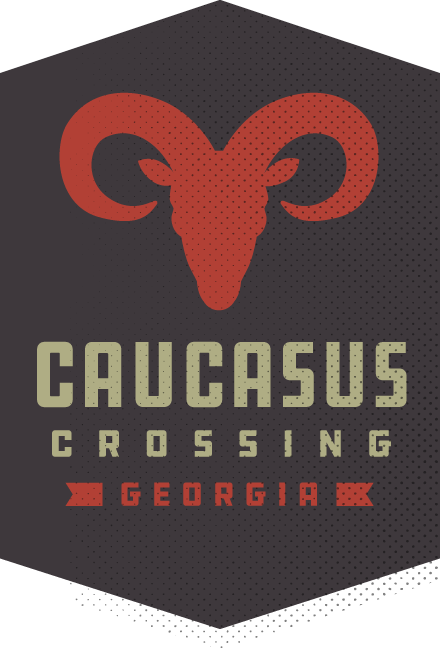 The northern part of the Caucasus Crossing is a meandering traverse of the Georgian portion of Europe’s highest range. It offers a blend of classic mountain topography and rolling steppe, punctuated with a 12th Century monastery chiselled into a rockface, a ride around the country’s largest lake, a profusion of fortified towers, a generous handful of rugged passes, the inevitable run-ins with fierce Tushetian sheepdogs, and likely a few shots of chacha, the country’s potent homebrew, along the way.
The northern part of the Caucasus Crossing is a meandering traverse of the Georgian portion of Europe’s highest range. It offers a blend of classic mountain topography and rolling steppe, punctuated with a 12th Century monastery chiselled into a rockface, a ride around the country’s largest lake, a profusion of fortified towers, a generous handful of rugged passes, the inevitable run-ins with fierce Tushetian sheepdogs, and likely a few shots of chacha, the country’s potent homebrew, along the way.

About Lee and Cherry
Lee Vilinsky (USA) and Cherry Fitzsimmons (UK) met whilst riding in Patagonia in 2014 as they were coming to the end of multi-year bike trips through the Americas. Since finishing their respective trips, they’ve settled in London. They have returned to Latin America to ride dirt roads in Cuba and Northern Colombia, and more recently spent six months riding in Spain, the Caucasus, Central Asia, and India. Find them on Instagram @leevilinsky and @theseplacesinbetween.
Please keep the conversation civil, constructive, and inclusive, or your comment will be removed.






